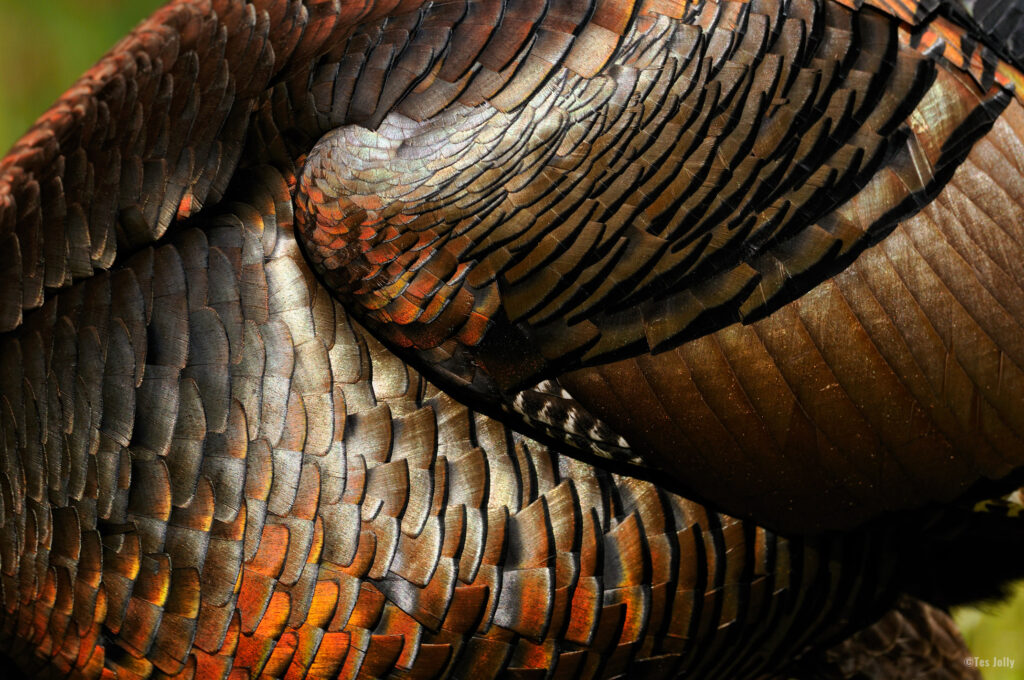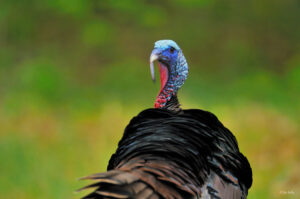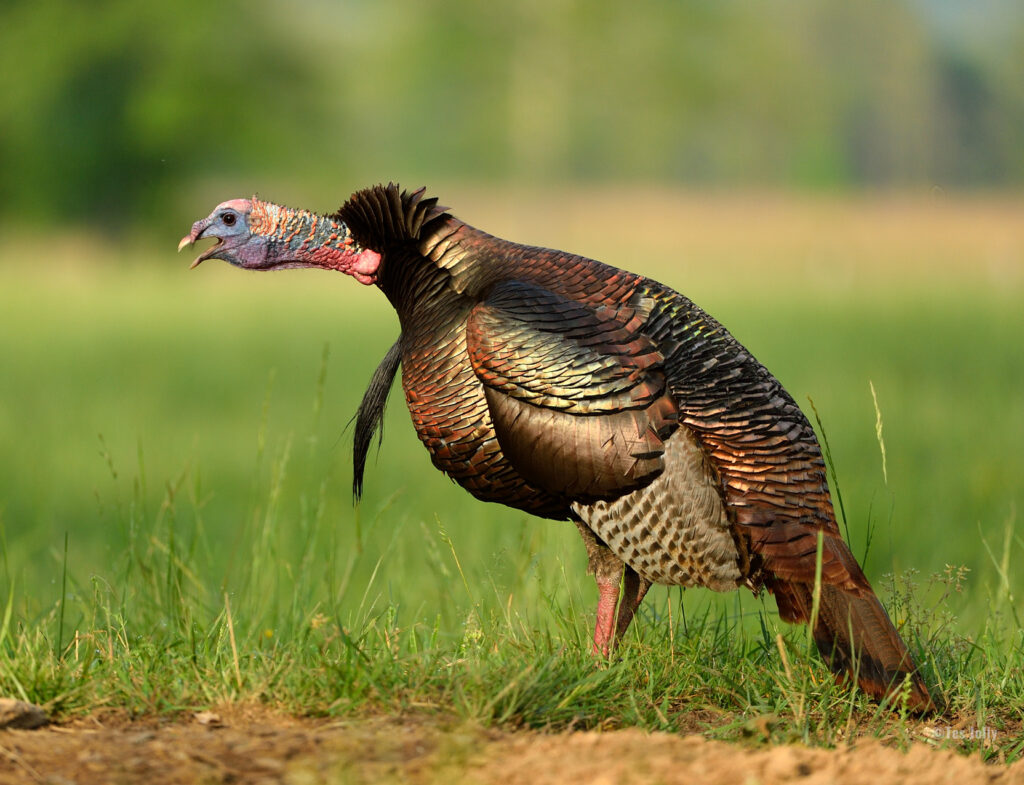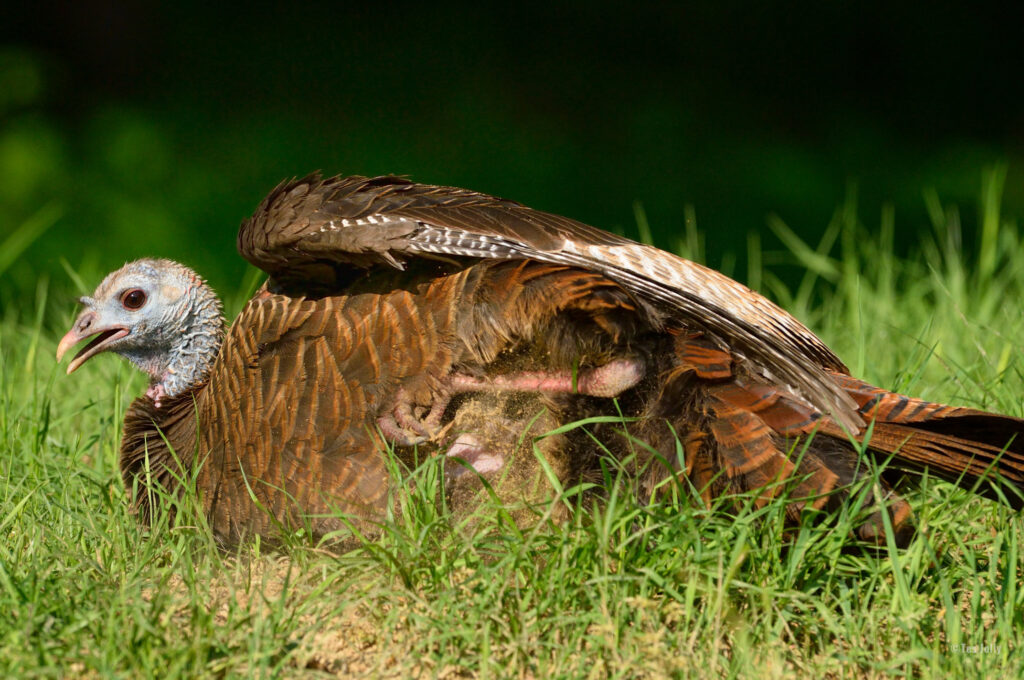It’s “turkey time,” and the “king of spring” obsession begins. We plot, plan, scout and practice those annoying yelps and hoots at family members like those cramming for college finals. Soon our large, grapefruit-sized brain will be pitted against toms with a measly grape-sized wad of gray matter, which during the spring, has all circuits locked on two things…procreation and staying alive. If we’re blessed, there’ll be times our sizable brain functions spectacularly and our tag is punched. There’ll surely be plenty of head-scratching, hat-slamming encounters that prove brain size really doesn’t matter…and that’s a fact! Following are wild turkey facts you may not know. Good luck in the turkey woods. May your grapefruit-sized brain prevail!
Wild Turkey History
North America’s wild turkey (meleagris gallopavo), evolved more than 11 million years ago into five subspecies. It has just one close relative, the gaudy-colored oscillated turkey that inhabits Central America, primarily on the Yucatan peninsula. Wild turkeys, especially the tom, with its iridescent feathers, colorful wattles, magical snood and impressive fan were revered in ancient Mayan and Aztec civilizations. Aztecs called them huexolotlin. They, and the Mayans, honored wild turkeys with religious festivals each year using the feathers to decorate clothing, jewelry, headdresses and necklaces. They also recognized the turkey as a valuable food source. Domestication first occurred in Mexico and later tribes such as the Navajos in the American Southwest raised wild turkeys to fatten for food.
{“IT’S ABOUT CREATING A LEGACY FOR ALL FUTURE GENERATIONS. SUBSCRIBE TODAY!”}
Spanish explorers encountered the domesticated birds in Mexico during the 16th century. They were included in the plunder taken back to Spain around 1519 and later exported to England. The European birds were further domesticated and later reintroduced to the New World in the 1660’s where the forests in the Northeast already had wild turkey populations. The ancestor of our modern Thanksgiving turkeys is actually the European-bred but originally Mexican domesticated wild turkey.
Turkey Feather Facts

An adult wild turkey is covered with 5 to 6 thousand feathers in various sizes, shapes and colors that lay in patterns called “feather tracts.” There are eight different feather shapes. The shaft of a body feather is nearly 3/4s grayish fluffy down. The head, neck and breastbone area are virtually featherless. Older birds develop a callous on the breastbone skin from friction against roost limbs.
The iridescence of the feathers of an adult strutting tom in the sunlight is a remarkable sight. Their feathers shimmer like a mirage in red, gold, copper, green, purple and bronze. The tail fan averages18 feathers but may be more or less. Feathers serve several survival functions – protection from the elements, camouflage, touch sensation, for flight and ornamentation when attracting the opposite sex. From poult to adulthood, turkeys go through four feather molts.
The beard is a modified feather of bristly filaments that grows from the breast area. Toms have beards, though about 1 in 10 hens is also bearded. The beard’s function is not known with certainty, however it may influence mate selection by hens. Longer beards indicate healthier, mature males and therefore prime mates.
Turkey Snoods

Only the wild turkey and the oscillated turkey have a snood. Savvy turkey hunters are snood watchers. It’s the slinky-like appendage with a life of its own growing from the top of the beak. Colors range from white, gray, shades of blue, pink, red or purple. The snood is a “mood meter” that indicates a turkey’s state of mind. It identifies and/or rates gender, sexual readiness,
health and emotions. Male turkeys have larger, more developed snoods, especially during mating season. Some hens lack snoods.
A tom’s snood is long and brilliantly colored during courtship and mating. Studies show hens prefer toms with longer snoods. A long, prominent snood suggests a healthy bird. Studies indicate better bacteria resistance in birds with longer snoods. Bolder colors indicate aggression or mating readiness. Because it is fleshy and blood-filled, it can change length very quickly. A snood that is retracted and pale-colored indicates the bird is frightened. An angry bird has a short, boldly colored snood. A relaxed snood suddenly shortens when a turkey is alarmed or senses danger.
Full Strut – How It Happens

Turkey hunting wouldn’t be near as much fun if turkeys didn’t strut. Do you know how they do it? The mesmerizing transformation that inhabits the dreams of turkey hunters is actually a form of controlled goosebumps. Think “turkeybumps.”
Certified wildlife biologist, Bob Eriksen, explained the mystery. The small muscles located at the base of each feather enable the bird to move and control the position of its feathers. Those muscles are connected to other very small muscles within the skin. When strutting, the turkey contracts the muscles that control feather position, causing the body feathers to stand erect. The same applies for a group of muscles located at the base of the tail, which acts as a swivel to display the fan more effectively. The same muscles in the wings enable the primary wing feathers to drop to the ground.
Turkey Gobble
Start to finish, a gobble happens fast, lasting about a second. Interesting things happen in that short space of time that the naked eye can’t see. With high speed, digital frame rates a sequence of one gobble can be shot and analyzed in multiple images. The gobble is actually prefaced with the tom tilting its head downward, the beak opens wide, presumably to gulp air, the head and neck extend and the bird gobbles. During the gobble, the second, or inner eyelid often closes. A droopy snood may get caught like a worm in the bird’s beak as it whips about from the force of the gobble.
{“IF YOU LOVE WILDLIFE AND WANT TO IMPROVE HABITAT SUBSCRIBE TODAY!”}

Ground and Air Speeds
A turkey typically opts to run from perceived threats, ducking its head and tucking low to the ground. No wonder turkey legs take hours to tenderize in a crockpot. It’s muscular legs enable sprint speeds up to 15 mph with incredible agility and explosive speed.
Turkeys may be heavy-bodied, but their powerful leg muscles easily launch even the heaviest toms into the air where flights may range 200 to 400 yards. Once in flight a turkey may set its wings and glide up to a half mile to escape danger. Recorded flight speeds exceed 50 mph. A turkey’s tail feathers help with steering and lift in flight.
Turkey Vision Facts
Turkey hunters know all too well a turkey’s laser-like vision is its primary defense mechanism. They have the uncanny ability to detect the blink of an eye or the slightest movement. It seems sometimes they can read a hunter’s mind too!
A turkey has “monocular vision” with the eyes set on the sides of the head. To compensate for the lack of 3D sight, a turkey cocks its head left and right to help determine distance and potential threats. A turkey can twist its long neck nearly 180 degrees for eyes in the back of the head vision. Hens and toms can see some colors as evidenced by their reaction to the reds, blues and whites of a gobbler’s head during breeding season. The tom’s head colors stimulate hens for mating and suppresses the breeding urges of subordinate toms.
The Truth about Turkey Poop
Let’s talk turkey poop. Male and female turkeys have uniquely different bowel movements because of anatomical differences. This is not only an interesting fact, but very helpful to turkey hunters when scouting. Finding the tubular or J-shaped dropping of a tom turkey can make any turkey hunter smile. Hens leave curly, coiled poop that’s been referred to as the “Dairy Queen swirl.” So, why the big difference in shape?
The rear end of many birds, including turkeys, has a multi-functional orifice that’s also used for reproduction. The terminal ends of the genital and digestive tracts are not separated and use the same area called the cloaca. In male turkeys, the reproductive organ, the phallus, is situated in the cloaca near the tail end of the digestive tract. Thus, there’s less space for the droppings on the way to daylight and no room for coiling. In hen turkeys, the droppings exit the large intestine and into the cloaca. Their cloaca is roomier and expandable for eggs to pass through so their droppings can curl and coil or clump on the way to the exit.
Toms Take Breaks
“Squatting” is not uncommon with gobblers who are “chilling out” and resting during midday hours. During the egg-laying period, hens generally return to favored feeding areas. Gobblers may travel during midday in search of hens but some stay close or return to afternoon feeding and roost areas. They may squat or “loaf” in a shady spot during hot days, in the sun during cool days, or on the lee side of a windbreak on blustery days. There, they hang out until the hens return.
Turkey hunters aren’t the only ones catching a power nap in the spring woods. Sleeping on the ground is not that unusual for a gobbler during the breeding season. Toms need energy for afternoon strutting when hens return from their egg laying duties.

{“BECOMING A GAMEKEEPER IS NOT JUST THE BEST WAY TO PRODUCE GREAT HUNTING… IT’S THE BEST LIFE! SUBSCRIBE TODAY.”}
Anting Behaviors
The earliest known description of this peculiar bird behavior was reported in 1831, by American ornithologist, John James Audubon. He described young wild turkeys as wallowing in anthills. “Anting” appears to be widespread and common, but not readily observed because it’s assumed the bird is “dusting.”
Anting occurs in two ways: active and passive. Blue jays, for instance, utilize ants actively, by capturing, crushing and rubbing them on their skin or feathers. Wild turkeys passively ant. The bird crouches atop an ant mound and may rub its wings and tail on it allowing the disturbed ants to crawl over its body.
What is the function of anting? Biologists have debated several theories for years. Each is based on the fact that only 24 species of ants are used in anting. High levels of formic acid is found in all of them. Some suggest that the anting process distributes formic acid, which is believed to help inhibit parasites such as feather mites and biting lice. A widely held theory holds that the birds use ants to soothe irritated skin. Anting is more common during late summer and early fall, the period of heavy feather molting when skin is irritated during rapid feather replacement. Birds smear ants on their skin and feathers where new feathers are growing. Formic acid feels hot to the touch and penetrates the skin easily. Hence, in theory the acid may soothe the bird’s irritated skin.
Revered, Reduced and Recovered
The wild turkey is a boldly unique creature with a long and storied history, at one time highly revered, then vastly decimated in numbers, and finally experienced a remarkable comeback. Much has been learned over decades of research about the grand bird, its history, biology, behaviors and how to hunt them. The dedicated work of state and federal agencies, conservation organizations such as the National Wild Turkey Federation, corporations like Mossy Oak®, hunters and concerned individuals have all contributed to the wild turkey’s recovery and success in 49 of 50 states. Wild turkeys have even achieved nuisance status in some urban and suburban areas! And that’s a fact!
Join our weekly newsletter or subscribe to GameKeepers Magazine.
Your source for information, equipment, know-how, deals and discounts to help you get the most from every hard-earned moment in the field.









